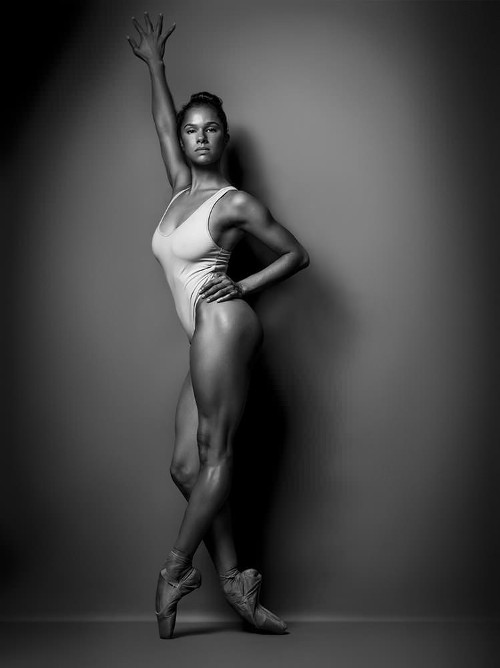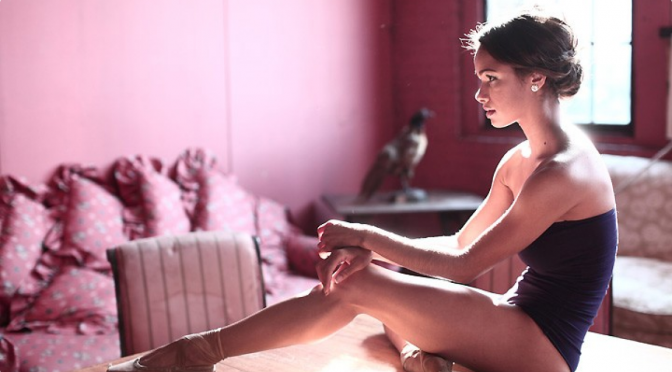Entertainment News – Nothing could get between Misty Copeland and her dream of becoming a ballerina: not her muscular physique, or the age at which she started dancing, or her humble roots.
 Today, the artist is an inspiration for millions of people across the world – at 32 years old, she is one of the first African descendants to become a soloist for the American Ballet Theatre (ABT).
Today, the artist is an inspiration for millions of people across the world – at 32 years old, she is one of the first African descendants to become a soloist for the American Ballet Theatre (ABT).
It is one of the most important classic dance companies in their world, and in their history, her name will fit alongside the likes of Mikhail Baryshnikov, Alicia Alonso and Natalia Makarova, stars who have all been a part of the group.
Copeland’s popularity recently grew thanks to a moving commercial she did for the sportswear brand, Under Armour.
In the advert, the dancer is in the middle of a practice room, about to start her routine. While she’s just rising onto her toes, a voice off-screen reads a piece about her past: a dance academy told her that they couldn’t accept her because she didn’t have the right figure for ballet, and that at 13 years old, she was too old to start learning the dance techniques. The advert ends with the ballerina moving around the scene, accompanied by the inscription “I’ll do what I want”.
To this day, the advert has been seen by more than 6 million people on the brand’s YouTube channel. Her life has also been documented in publications such as The New York Times, Vogue, GQ, Time, Forbes, People and The Huffington Post, to name a few.
But neither her fame nor her success came easily. Her history isn’t quite like that of other professional ballerinas, who are often millionaires’ daughters or who come from a classical dance family. This dancer is everything but that.
Misty was born in Kansas, a city which she left aged two, after her mother went through two failed marriages.
She and her family moved to a fairly troubled neighbourhood in Los Angeles, California.
“We were practically homeless, and we lived in a motel, just trying to get enough money to go to the corner shop to get some soup. When I found ballet, it was at probably the worst time of my childhood”, Copeland told ABC News.
Copeland started dancing at 13 years old (10 years after the time most girls start learning ballet).
Destiny led her to classical dance when, one day, she went with her brothers to the club where Cindy Bradley was teaching. This teacher then encouraged Misty to learn the art.
According to the dancer, ballet wasn’t something that had interested her much up to this point, but the teacher’s persistence and encouragement led her to the point where, three years later, her talent stood out in the class.
She learnt her first dance steps at the San Pedro Dance Center. Two years later, she was winning prizes at Music Center Spotlight, which awards scholarships to young performers.
The rest of her dance teaching took place in the San Francisco Ballet School (1999), which she then followed with an intense program at the ABT in 2000 to turn her into a professional.
“I believe that, from the beginning, Cindy saw stardom in my destiny. ‘The perfect ballerina has a small head, sloping shoulders, long legs, big feet and a wide ribcage’, she once told me, according to George Balanchine’s idea of the perfect ballerina. She looked at me – really looked at me – and adoringly said ‘That’s you. You’re going to dance in front of kings and queens. You’re going to have the sort of life that most people can only dream of’. That day, I actually started to believe it”, Copeland said in the book, Life in Motion.
Even though she had plenty of talent, Misty still had one more battle to do with ABT, which was characterized by the need for slim, white ballerinas. She had to prove that the colour of her skin and her muscular physique were also made for ballet.
“When I started to dance, and even when I was at ABT, there wasn’t anyone else there that looked like me. I spent a lot of time trying to fit in with the other ballerinas, but there were so many differences between us – the colour my skin, my body, my education and even the music I listened to. I was insecure and felt quite lost, but I’ve definitely had a number of people in my life who have helped me believe in my talent”, she told Forbes. She is known as the artist who, in 2011, became the first dancer of African descent to assume the principal role in Bird of Fire.
Among the people who have supported the dancer is the singer, Prince, who she’s had the opportunity of accompanying on stage, and who she’s also been linked to romantically.
“Being a ballerina doesn’t always get positive feedback. The timetable you work is so packed that often there’s only time for criticism, so having someone like Prince telling me ‘you have no limits’ really opened my eyes and gave me the confidence I was lacking.”
Now, at the height of her career, Misty Copeland knows that with anything she puts her mind to, the sky is the limit. One of her most recent pursuits is Project Plié, an initiative which brings together ballerinas of different nationalities to the ABT.
Translated by Leah Hendre from La Nacion

